Last updated on January 17th, 2024
There are eight planets (Pluto was consider a planet between 1930 and 2006, and is currently considered a dwarf planet) in our Solar System and a megastar – the Sun. While all planets revolve around the Sun in different orbits, there are few that have distinctive features as compared to that of the others. With these interesting facts about Saturn, let’s gather more information about this gas giant.
They call it beautiful
1. Saturn is also known as the “Jewel of the Solar System,” because of its beautiful rings and appearance.
“PIONEER 11 WAS THE FIRST SPACECRAFT TO REACH SATURN.”
It’s far
2. It is the 6th planet from the Sun and also the farthest that can be seen with the naked eye (Order of the planets from the Sun: Mercury, Venus, Earth, Mars, Jupiter, Saturn, Uranus, Neptune, and Pluto (the dwarf planet)).
The direction of rotation
3. Saturn rotates from West to East which is also the direction of Earth’s rotation.
Massive in size
4. In size, Saturn is the 2nd largest of all planets, behind Jupiter.
Rings are many and spectacular
5. Saturn is famous for its rings that are huge but very thin.
How many rings?
6. Saturn has seven main rings with spaces between them.
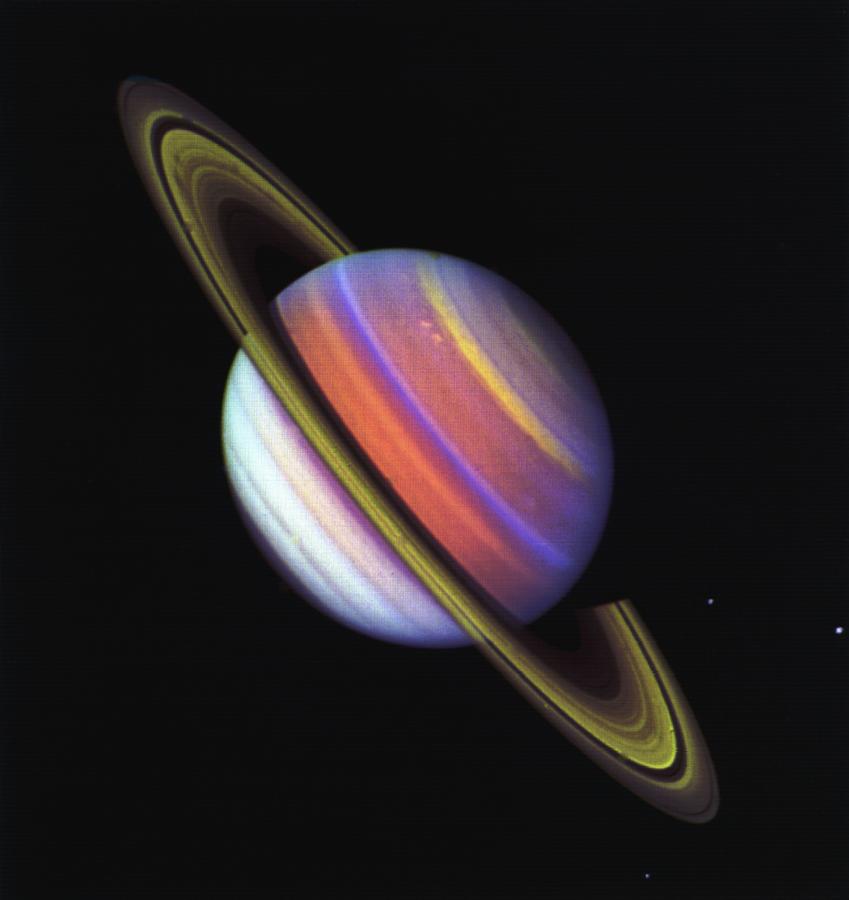
The composition like that of Jupiter
7. Composition of Saturn is not much different from that of Jupiter. Roughly 75% of Saturn’s atmosphere is made up of hydrogen. The other 25% is helium, with traces of other substances such as ice and methane.
Why is it flat at the poles?
8. It is the flattest of all planets in the Solar System. Because of its high speed of rotation and gaseous composition, Saturn has observed this form. To give you more detail about this, note that the distance from the planet’s center to its equator is 60,300 km while that from its center to its poles is 54,000 km.
Days at Saturn
9. Saturn has the second shortest day behind Jupiter. The length of a day on Saturn is 10 hours 32 minutes; and, did you know how scientists measure this data from various planets? They just spot a crater and wait for the crater to rotate back in view, thus determining the length of a day on a planet. However, in Saturn’s case, as there is no solid mass on the planet, they had to take into account the planet’s magnetic field for that matter.
Around the Sun
10. Due to the enormous distance at which the planet is positioned with respect to the Sun, Saturn takes 29.4 Earth years to make one revolution around the Sun.
Days vs years
11. On Saturn, days are short and years are long as compared to that on the Earth.
Visitors to the planet
12. Only four space crafts have studied this planet. This might be due to the fact that it is at a greater distance from Earth as compared to other planets. And they do not have any landing site on the planet because of the lack of solid surface. And the planet’s hot gasses won’t even allow any spacecraft unscathed either.
Windy and noisy
13. Winds on Saturn can blow as fast as 1800 km per hour while that on the Earth are slower than this.
‘Saturn vs Earth’ in size
14. Given Saturn’s diameter, almost 750 Earths could fit in Saturn and 1600 Saturns could fit inside of the Sun.
Day of the week
15. Saturday–the 6th day of the week–is named after Saturn.
A popular moon
16. Enceladus — one of Saturns’ moon — is the shiniest object in the Solar system. It is mainly because of the fact that it is made up mostly of ice that reflects almost all of the light that falls onto it.
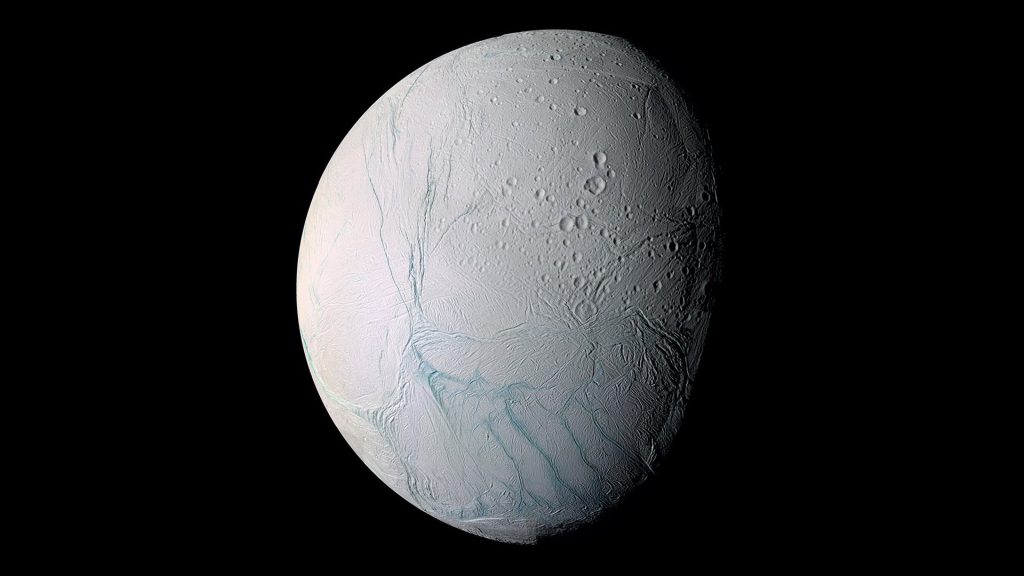
A powerful magnetic
17. Saturn has liquid hydrogen inside of it that can produce electricity. Creating a magnetic field almost 578 times more than Earth, Saturn charges chemicals from space. This can cause the gas to glow.
History speaks
18. Saturn was mentioned in the oldest written records by the Assyrians from 700 BCE. They named Saturn, “Star of Ninib”, a sparkle in the night sky.
Atmosphere matters for life
19. Titan, another of Saturn’s moon is the only moon to have a substantial atmosphere. Its atmosphere is 370 miles deep.
Comparing the moons
20. Titan is also the second largest moon in the solar system after Jupiters’ Ganymede. And it is larger than Mercury (the smallest planet in the Solar System.)
21. Titan’s atmosphere is incredibly similar to Earth. Like our planet, it’s made up of almost completely nitrogen and a little bit of methane, making it a place keen to be explored by humans.
Seasons
22. Saturn generates its own heat, and seasons on the planet are not dependent on the Sun. This could be because of its long distance from the Sun.
Hot or cold
23. -178 degree Celsius is the average temperature on Saturn.
A pressure cooker
24. Atmospheric pressure on Saturn is 100 times than that on the Earth.
Core’s temperature
25. Saturn’s core is as hot as the Sun.
How fast?
26. Saturns’ average velocity is 9.64 km per second while that of Earth’s is 30 km per second.
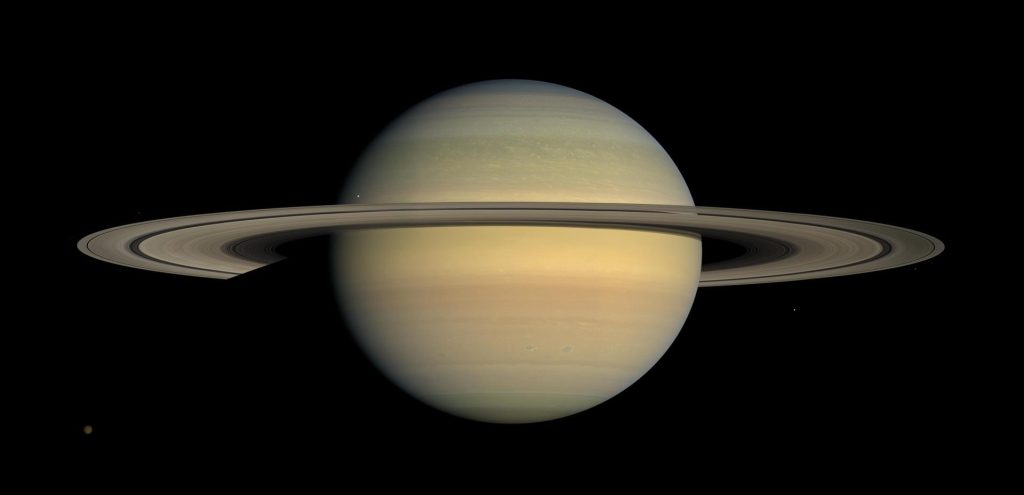
Light or heavy?
27. Saturn is the least dense planet in the solar system. It can easily float in a pool of water, provided we could build one to accommodate a planet of this size in it.
Sky gazing
28. With the help of a telescope, Saturn’s rings can be easily seen from Earth.
Constituents of its rings
29. Did you know that Saturn’s rings contain particles that can be as small as dust particles and as large as mountains?
Ring vs ring
30. There are many rings that revolve around Saturn and interestingly, their speed varies. The difference in the speed of these rings could be because of the difference in the weight of the particles that are revolving in them.
At its core
31. Rock, ice, and water — at the center of Saturn under intense pressure and heat, make for a solid core.
What color?
32. Saturn is light brown in color.
How its rings came into existence
33. The planet’s rings were formed from asteroids, comets, and moons that were shattered by the massive Saturns’ powerful gravity.
Galileo’s observation
34. When Galileo Galilei first observed Saturn in 1610, he saw a pair of an object on either side of the planet, which led him to draw the conclusion that Saturn was triple-bodied. Of course, his observations were limited due to his use of a basic telescope that did not have high magnifying powers as compared to the one that was later used by Christiaan Huygens to conclude that Saturn had rings around it.
Distance from the Sun
35. About 1.4 billion km (886 million miles) or 9.5 AU.
NASA’s Cassini
36. The nuclear-powered aircraft was destroyed by the US space exploration agency on 15th September 2017. NASA had to take this step in order to defend life on Saturns’ moon–Enceladus–where they suppose Alien life exists. If the spacecraft was not destroyed in a controlled fashion, chances are that it would hit this moon and may cause damage to alien life which scientist think is in existence on Enceladus. The Cassini spacecraft was a hefty $3.26 billion investment which NASA had put into orbit in 2004 after its launch in 1997.
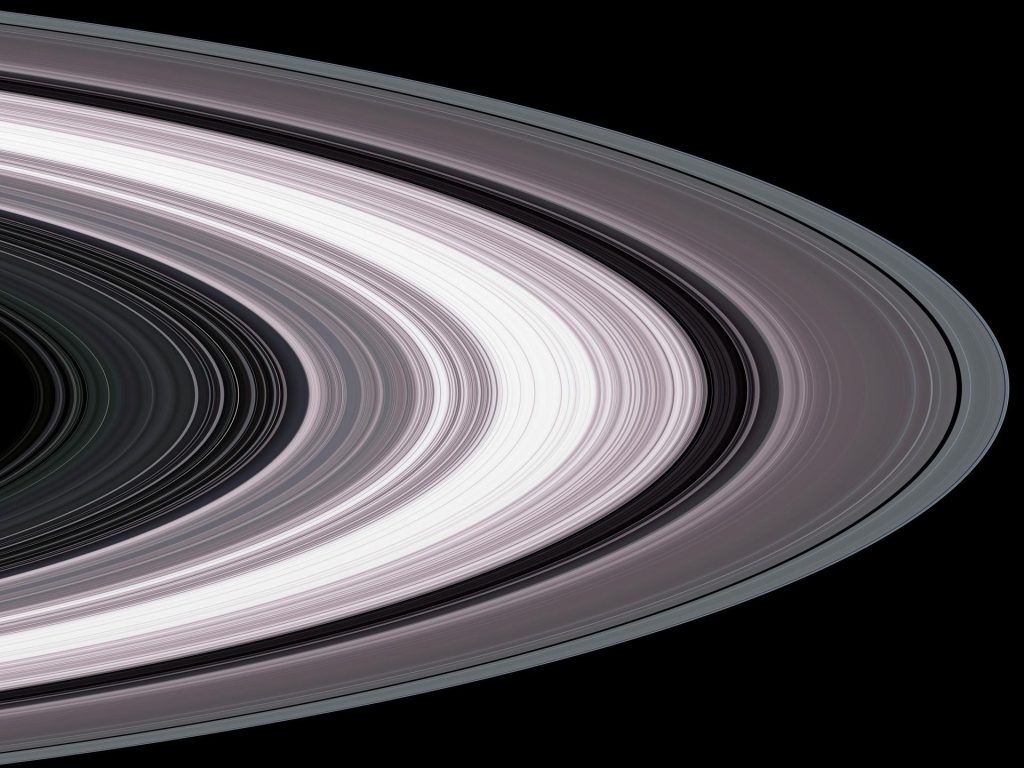
The Jewel of the Solar System
37. Saturn is often referred to as ‘The Jewel of the Solar System’. This is because of the golden-like hue exuding the planet and its rings, arguably occasionally looking like a crown.
140+ moons
38. Saturn has the most moons out of all the planets. Up until May 2023, it was believed that Jupiter took the title until they discovered an insane 62 more moons on Saturn.
Named after
39. All planets, except Earth, were named after Greek or Roman Gods. Saturn’s name comes from the Roman god of agriculture, who taught civilians how to farmland and source their own food.
Lighter than water
40. Saturn is the only planet in the solar system that is less dense than water. So, in theory, if there were a body of water big enough, Saturn would float.
41. Saturn gives off more energy than it receives from the Sun. This is likely due to the compression of gravity in Saturn and the friction of the helium.
42. Did you know that it’s constantly raining on Saturn? Not actually rain, but tiny particles that rain down from the rings onto the atmosphere.
43. On Saturn, it can rain diamonds. The lightning on Saturn produces soot-like methane gas; when the pressure grows, it can likely transform the soot into diamonds. Eventually, the pressure further causes these diamonds to liquefy.
44. In 2001: The Space Odyssey, the book details their mission to Saturn. However, in the film, they chose Jupiter. The crew couldn’t figure out how to create a realistic model of Saturn, so they opted for Jupiter.
45. Older records of Saturn describe it as a star, suggesting it sparkled. However, as technology advanced, they soon considered it a planet.
46. The fact that Saturn spins so fast is the reason why there are so many storms on the planet. Roughly every 20 to 30 years, a huge storm happens in and around Saturn, where thunderstorms produce lightning and huge clouds. Only six of these storms have been recorded since the late 1800s. The most recent was in December 2010.
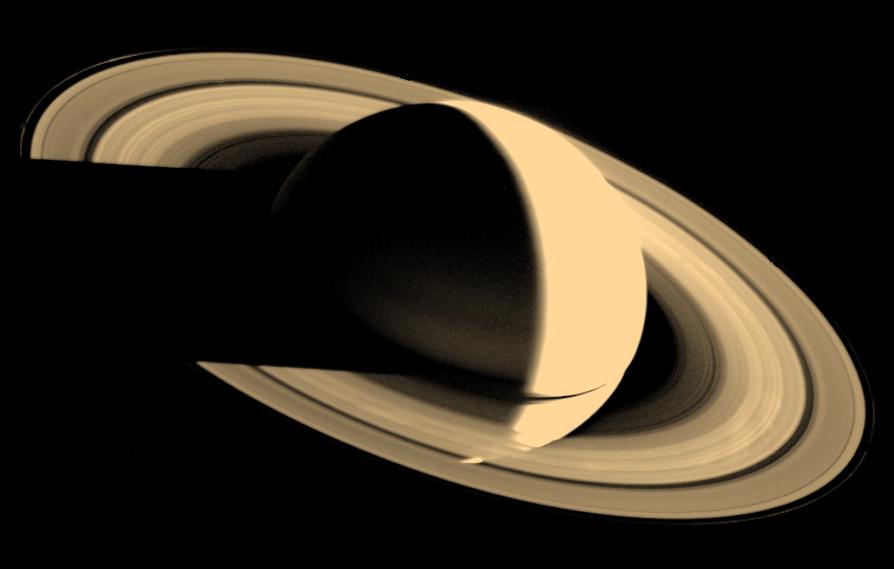
47. On the south pole of Saturn, there is a storm raging without ending. Storms on the planet can last for many decades, making the planet unfriendly for any life form.
48. Experts believe Saturn spins so fast compared to other planets in the solar system because it’s so light. Saturn still spins slower than the other gas giant, Jupiter.
49. Did you know that Saturn is twice the distance from the Sun as Jupiter? Its orbit may not be perfect, but regardless of that, it is always further away from the Sun.
50. A phenomenon known as the Great White Spot that occurs on Saturn is believed to be as big as the Earth. The spot is a storm occurring every few decades, according to astronomers.
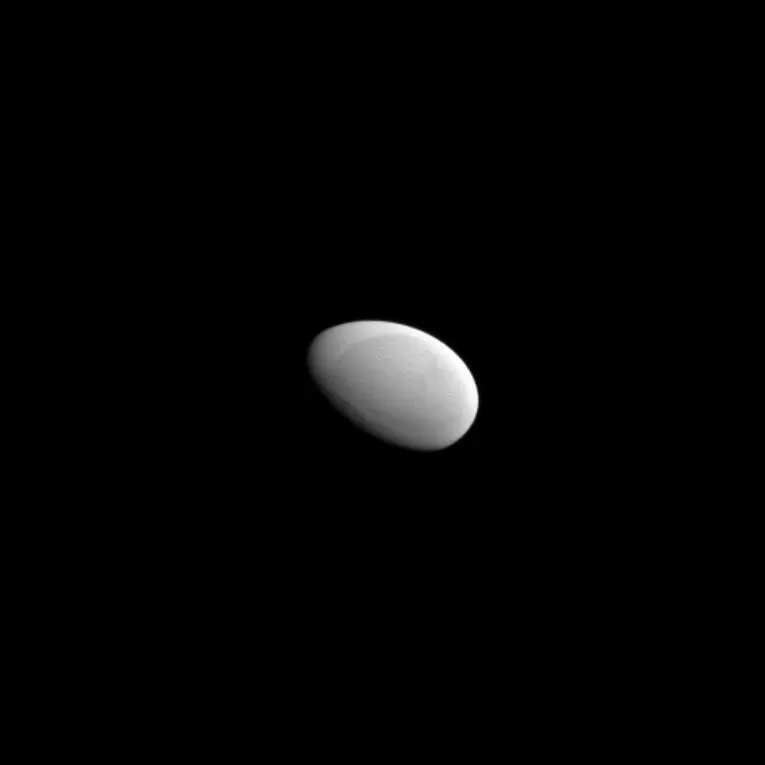
51. An interesting moon shaped like an egg can be found orbiting Saturn. The moon named Methone has an elongated shape due to the extremely strong gravity of Saturn and its own weak gravity.
. . . continue reading on the next page
